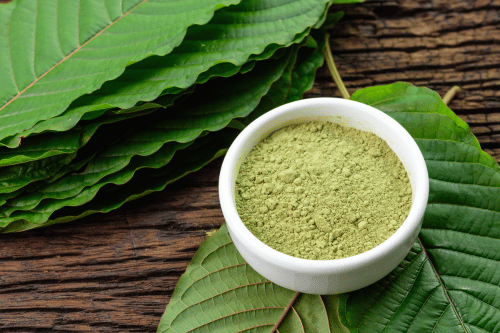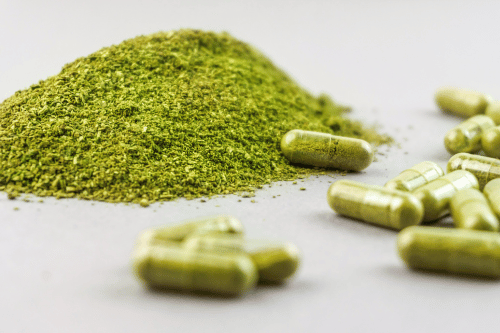Kratom Half Life: Understanding Its Duration and Effects
Kratom, derived from the Mitragyna speciosa tree native to Southeast Asia, has grown in popularity as a recreational psychoactive drug and an aid for managing opioid withdrawal symptoms. While kratom produces both stimulant and sedative effects, understanding its half-life and how long it stays in the system is essential, especially for those facing potential drug addiction or withdrawal challenges. This article explores how kratom metabolizes, its duration in the body, how long it can stay in your system, and implications for drug testing and recovery.
What Is Kratom?

Kratom, also known as Mitragyna speciosa, is a tropical evergreen tree native to Southeast Asia. For centuries, its leaves have been utilized in traditional medicine and as a recreational psychoactive drug. Kratom contains over 40 alkaloids, with mitragynine and 7-hydroxymitragynine being the primary psychoactive compounds. These compounds are responsible for kratom’s diverse effects, which range from pain relief and mood enhancement to increased energy and reduced anxiety. Historically, kratom has been used to treat various medical conditions, including pain, fatigue, and anxiety, making it a versatile yet controversial substance in modern times.
What Is Half-Life, and Why Is It Important?
The half-life of a substance refers to the amount of time it takes for half its concentration to be eliminated from the bloodstream. In the case of kratom, the elimination half-life of mitragynine, one of its primary alkaloids, ranges from 2.5 to 9 hours. However, the duration can extend in chronic users, where the terminal half-life may stretch beyond 24 hours. This variability emphasizes the importance of understanding how kratom stays in the body for different individuals, especially those undergoing opioid withdrawal or managing chronic pain with other medications.
Factors That Influence Kratom’s Half-Life

Several factors affect the time kratom remains in the body:
Dosage and Frequency:
Higher doses result in longer half-lives, as the body takes more time to metabolize larger quantities of the drug. Frequent use leads to accumulation, extending how long kratom stays detectable.Fat Solubility:
Kratom alkaloids are fat-soluble, meaning they bind to fat tissues and are released slowly over time. This affects users with higher body fat percentages, as the elimination process may take longer.Metabolism and Genetics:
Individual metabolic rates vary. Genetic factors play a role in how quickly or slowly a person’s body processes kratom. People with slower metabolisms experience extended half-lives, especially when taking higher doses.Medical Conditions and Drug Interactions:
Pre-existing medical conditions or the use of other drugs (e.g., opioid replacement therapies or prescription opioids) can alter how the body metabolizes kratom, increasing the time it stays in the system.
How Long Does Kratom Stay in the Body?

The question of “how long kratom stays” in the body is essential for individuals undergoing a drug test, as well as those managing addiction. The detection window varies by the type of test used:
Urine Tests: Kratom metabolites are detectable for up to 7 days.
Blood Tests: These tests are more effective for recent use, identifying kratom for up to 24 hours.
Hair Tests: In chronic users, hair tests can detect kratom use for over a month, making them the longest-lasting detection method.
Kratom metabolites stay longer in the body with frequent use. As with other opioid replacement therapies, individuals attempting to manage withdrawal may find that repeated kratom use extends the drug’s presence in the system.
Kratom and Drug Tests: What You Should Know
Although kratom is not currently listed as a controlled substance by the Drug Enforcement Administration (DEA), specialized tests for kratom are becoming more common. Standard drug tests do not usually detect kratom, but advanced testing methods, such as urine samples and blood tests, are used to monitor the presence of kratom alkaloids.
Some users seeking treatment for drug addiction may face positive drug screens due to kratom use, potentially complicating recovery efforts.
Detection Methods
Kratom can be detected in various bodily fluids, including urine, blood, saliva, and hair. The detection methods and windows vary depending on the type of test and the individual’s metabolism. Urine tests are the most common method for detecting kratom, capable of identifying the presence of kratom alkaloids for up to 9 days after use. Blood tests can detect kratom for up to 2-9 days, providing a shorter detection window. While saliva tests are not commonly used for kratom, hair tests can detect the substance for up to 90 days, although this method is less frequently employed. Understanding these detection methods is crucial for individuals undergoing drug tests or managing kratom addiction.
Physical Dependence, Withdrawal, and Addiction
Long-term kratom use can lead to physical dependence and kratom addiction. The drug produces opioid-like effects, activating the same opioid receptors targeted by prescription opioids. As a result, users can develop tolerance and dependence, increasing the likelihood of withdrawal symptoms when kratom use stops.
Common Kratom Withdrawal Symptoms:
Anxiety and restlessness
Muscle aches and cramps
Nausea, vomiting, and diarrhea
Insomnia and irritability
These withdrawal symptoms resemble opioid withdrawal symptoms, making recovery from kratom dependence particularly challenging without professional support.
Risks of Kratom Use and Drug Interactions
Kratom use carries risks, especially when combined with other substances or medications. The drug’s interaction with opioid replacement therapies, such as methadone or buprenorphine, can result in dangerous side effects. Additionally, kratom combined with sedatives, alcohol, or other psychoactive drugs can increase the risk of overdose.
How Kratom Use Impacts Recovery
Many individuals turn to kratom to self-medicate for pain or manage opioid dependence. While kratom may offer temporary relief, its unregulated status as a dietary supplement complicates long-term recovery efforts. Some users may become reliant on kratom to manage chronic pain or alleviate opioid cravings, only to develop a new dependence.
Seeking Help for Kratom Addiction
If you or a loved one is struggling with kratom addiction, it’s essential to seek help from a medical professional. Kratom addiction can lead to physical dependence, withdrawal symptoms, and other health problems. A healthcare provider can help you develop a personalized treatment plan, which may include medication-assisted treatment, counseling, and behavioral therapy. Additionally, support groups and rehabilitation programs can provide a safe and supportive environment to overcome kratom addiction. Addressing kratom withdrawal symptoms and the underlying causes of addiction is vital for a successful recovery journey.
Kratom’s Legal Status and DEA Scrutiny
The Drug Enforcement Administration continues to evaluate whether kratom should be classified as a controlled substance. For now, kratom remains legal in many parts of the U.S. but is under scrutiny due to rising concerns about kratom abuse and dependence.
Frequently Asked Questions
What Does Kratom Metabolize Into?
Kratom metabolizes into multiple compounds, with mitragynine being the most prominent. This compound is primarily responsible for the drug’s effects, including its analgesic properties and stimulant-like effects.
Does Kratom Affect Cortisol Levels?
Limited research exists on kratom’s direct impact on cortisol. However, some studies suggest that psychoactive drugs like kratom may influence the central nervous system, potentially affecting cortisol regulation.
Conclusion
Understanding kratom’s half-life is essential for anyone using the drug, whether recreationally or for medicinal purposes. Knowing how long kratom stays in the body, the withdrawal symptoms it can trigger, and the potential drug interactions can help users make informed decisions about their health.
If you or someone you know is struggling with kratom dependence or addiction, Revival Mental Health offers comprehensive support for overcoming substance use disorders. Professional treatment can help individuals safely manage withdrawal symptoms and address the underlying causes of addiction.





